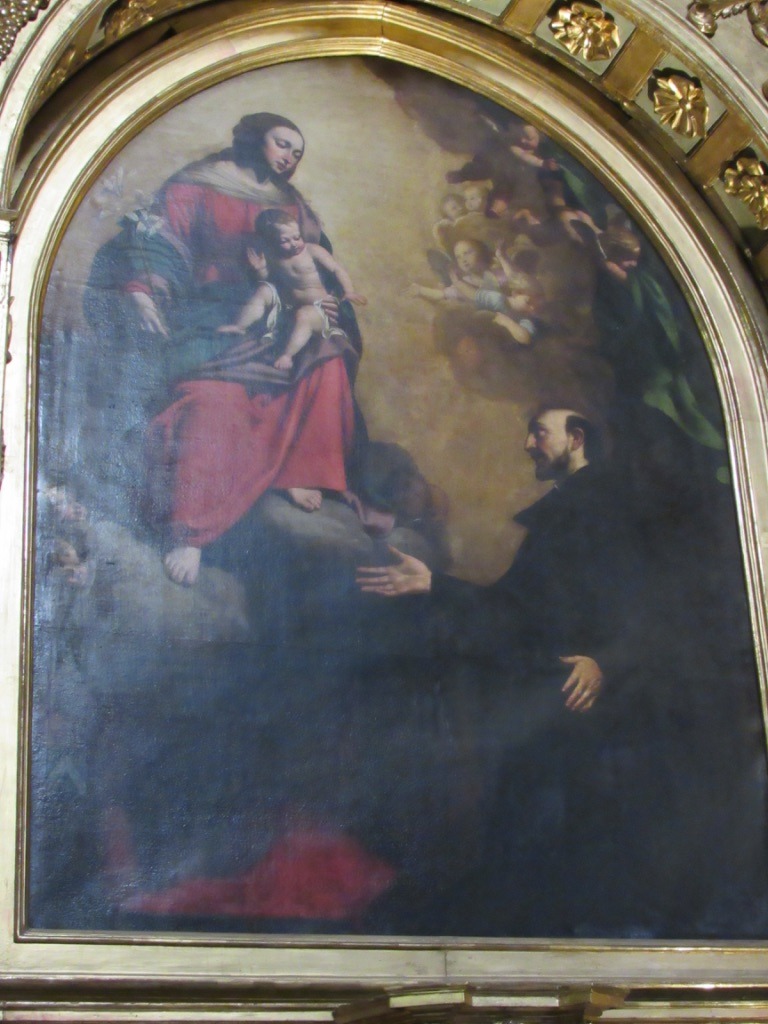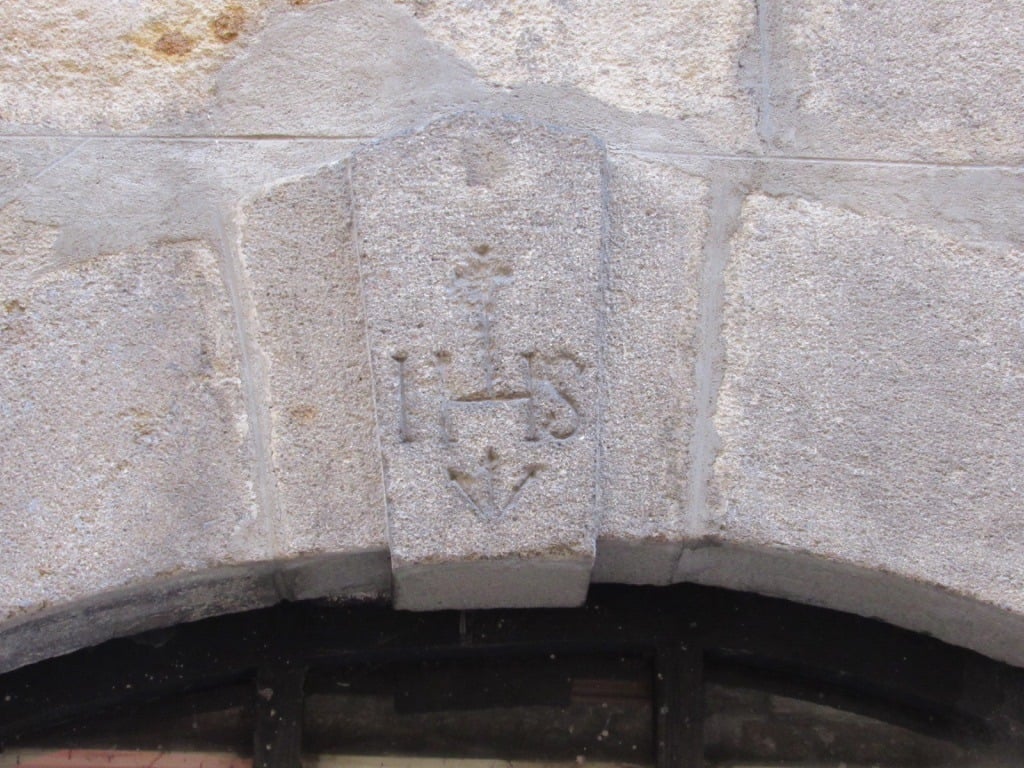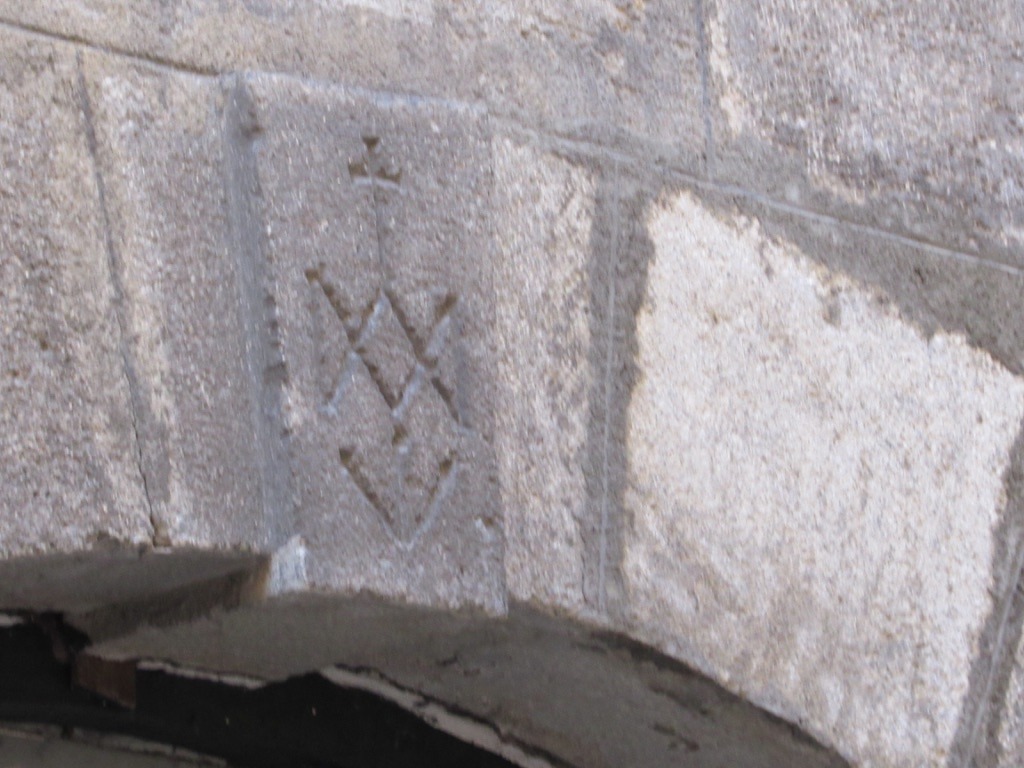Église du Collège
-

The Église du Collège was built 1605-36 by the Jesuits. It is the first example of the Jesuit architecture in France, which became the Baroque style, a new type of art developed after the Council of Trent (1545-63) and the Counter-Reformation. This church is modeled after Gesu Church in Rome, also built by the Jesuits.
Founded in 1584 by Ignatius of Loyola, the Jesuits led the Counter-Reformation after Protestants broke away from the Catholic Church because of its abuses. The Reformation is usually dated from Martin Luther's publication of the Ninety-five Theses in 1517. The Jesuits focused on education as well as religious art and architecture as their mission and contributions to the reforms of the Church.

The Jesuit monogram, IHS, is prominently displayed at the top of the church's exterior. The monogram stands for "Iesus Hominum Salvator" or Jesus is the savior of humanity. Despite all the decorations in the interior of the church, the outside remains rather plain with a triangular pediment and vertical and horizontal lines.
The altar looks like a set design in a play, and its elaborate decoration in gold are hallmarks of the Baroque style. The art contains lots of wavy lines, ovals, concave and convex forms in order to create a sense of motion. Also included in the sanctuary are scrolls, six Corinthian columns, statues of Saints Peter and Paul, and an elaborate tabernacle with a representation of God above all. Around the arch are portraits of priests who served the church.
Baroque paintings are also distinctive in their darkness except for the object of the viewer's focus. For example; the crucifixion scene above features Jesus on the cross as well as his mother, Mary, and John, the disciple. The painting here features St. Ignatius and the Blessed Mother. The side chapels honor various saints with one lit up for Saint Regis, a much revered saint in Le Puy. He was designated as the Saint of Lace Makers because he successfully convinced the Bishop of the time not to discontinue lace-making in Le Puy, an industry begun in Le Puy in 1407. The Bishop thought the industry was too frivolous and developed specifically for wealthy people. Regis had taught prostitutes how to make lace as a more decent means of supporting themselves and their children. He saved them and other craftspeople from losing their trade.
The side chapels honor various saints with one lit up for Saint Regis, a much revered saint in Le Puy. He was designated as the Saint of Lace Makers because he successfully convinced the Bishop of the time not to discontinue lace-making in Le Puy, an industry begun in Le Puy in 1407. The Bishop thought the industry was too frivolous and developed specifically for wealthy people. Regis had taught prostitutes how to make lace as a more decent means of supporting themselves and their children. He saved them and other craftspeople from losing their trade.
Regis also started a soup kitchen up the hill from the Église du Collège. It was one of the first of its kind. St. Regis is highly revered in Le Puy, and he is one of the models for the Sisters of St. Joseph in their works of charity and hospitality during the Apostolic Era of the Church. The other two models are St. Vincent de Paul and St. Francis de Sales.
The Jesuits built pulpits in their churches in order to emphasize the importance of the homily, which had been downplayed in the Catholic Church. Fr. Medaille preached in the Église du Collège at this pulpit. -
 The Jesuits also built a rectory in 1640 across from the Église du Collège. Fr. Medaille used to stay there during his visits to Le Puy. Notice the Jesuit symbols carved into the stones above the first floor. rectory in 1640 across from the Église du Collège. Fr. Medaille used to stay there during his visits to Le Puy. Notice the Jesuit symbols carved into the stones above the first floor.
The Jesuits also built a rectory in 1640 across from the Église du Collège. Fr. Medaille used to stay there during his visits to Le Puy. Notice the Jesuit symbols carved into the stones above the first floor. rectory in 1640 across from the Église du Collège. Fr. Medaille used to stay there during his visits to Le Puy. Notice the Jesuit symbols carved into the stones above the first floor.

